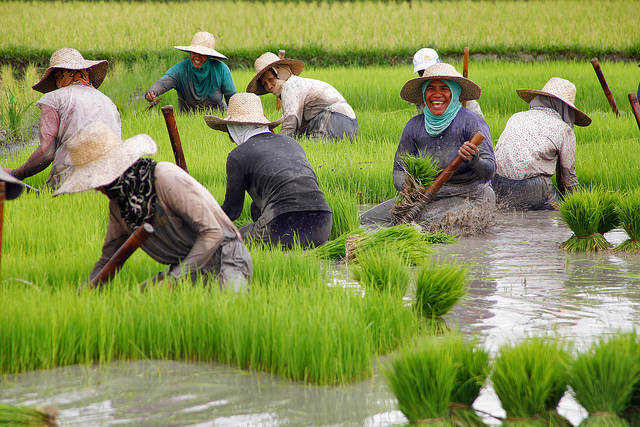Tags
Philippines reports record rice imports, while the poor face shortages.
by Stefano Vecchia.
For the third year in a row, the Philippines is the world’s leading importer, with domestic production continuing to fall, due, among things, to La Niña. Food absorbs 40 per cent of expenditures among low-income, resulting in greater social inequalities. Consumption has increased from 14.8 million tonnes in 2020-2021 to 17.4 million this year.

Milan (AsiaNews) – The Philippines is expected to import a record amount of rice for a third consecutive year, making it the world’s top importer of this staple food, which is not only essential at a nutritional level, but plays an important social and cultural role in Philippine society.
However, in a global market in trouble because of weather events, rising prices, protectionist policies, and strategic factors, imports at affordable prices are increasingly a challenge.
The latest available data come from the US Department of Agriculture, highlighting declining domestic production due to the La Niña and devastating natural events, which have affected the country’s main rice producing areas this year.
For less well-off Filipinos, life harder is likely to be harder, increasing their vulnerability. In fact, the country has gone from almost self-sufficiency in rice to a net importer in just a few years, due to several factors, both environmental and economic.
Decision-makers will have to make choices in the face of expected imports of 5.4 million metric tonnes for the 2024-2025 marketing year, largely as a result of greater demand, from 14.8 million tonnes in 2020-2021 to 17.4 million this year.
The reasons for the gap between supply and demand are the country’s growing population (currently at 118 million), evolving eating habits, and greater reliance on this staple food in difficult times. At the same time, finding supplies in foreign markets is becoming a challenge as well.
Warnings have been issued for some time, especially over the impact on the poorest tier of the population. According to the Philippine Statistics Authority, food accounts for more than 40 per cent of household expenditure in this group limiting household capacity to spend in other areas, which is contributing to greater social inequality.
What is more, large-scale imports at more competitive prices can negatively impact Philippine rice producers, especially small farmers.
The situation will require action from the authorities, both long-term, with investments and interventions to boost local production, and short-term, such as subsidies or price controls.
Although insufficient, the KADIWA ng Pangulo programme includes Rice-for-All kiosks that sell rice at 40 pesos (about US$ 0.65) per kilo under the aegis of the Department of Agriculture, with the participation of businesses, producers and consumers.
https://www.asianews.it/news-en/Philippines-reports-record-rice-imports,-while-the-poor-face-shortages-62132.htmlPublished Date: December 18, 2024






